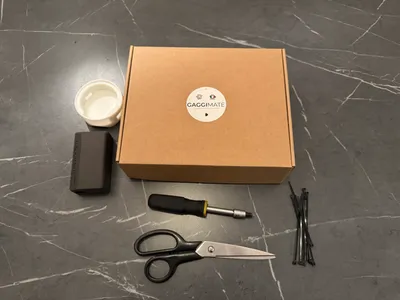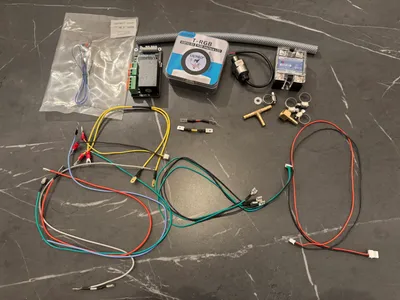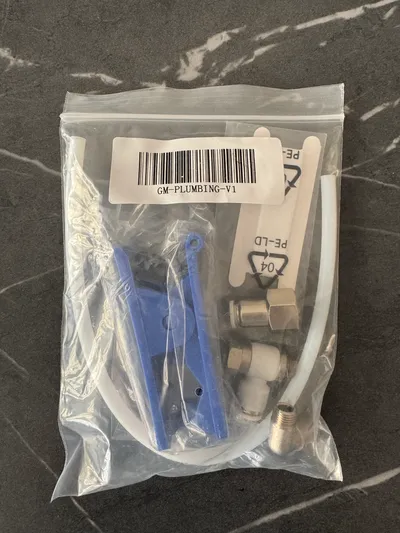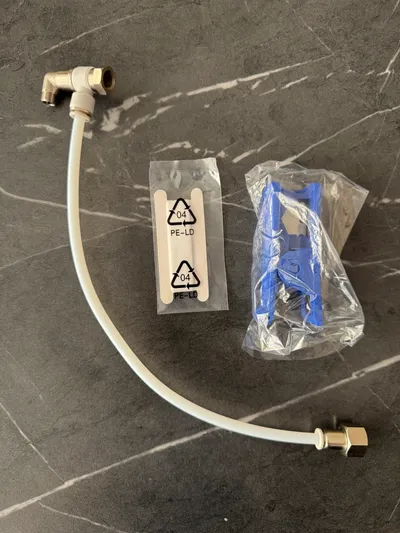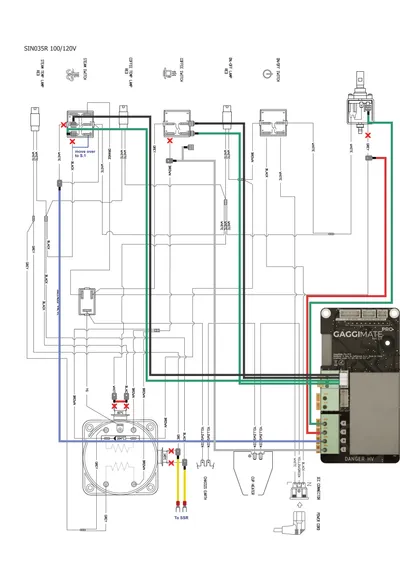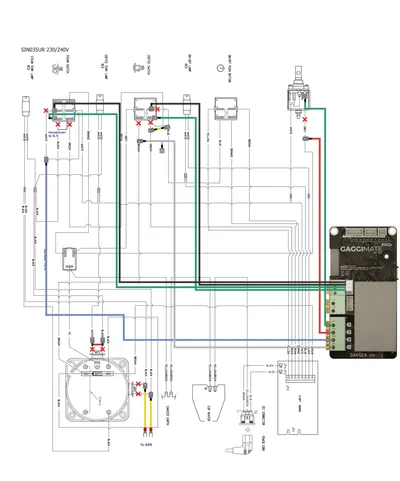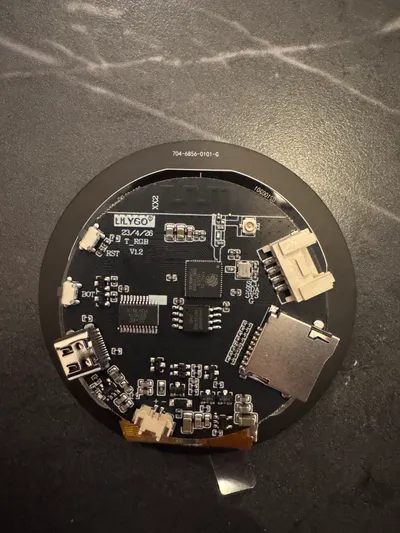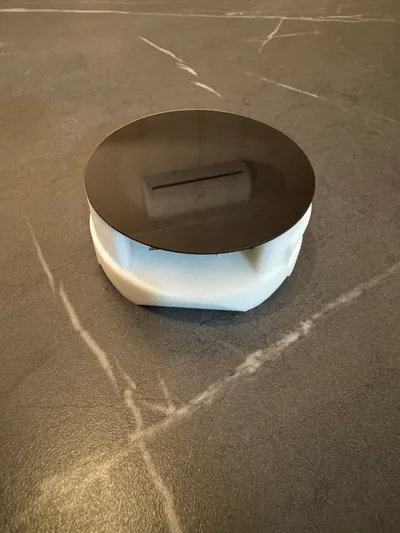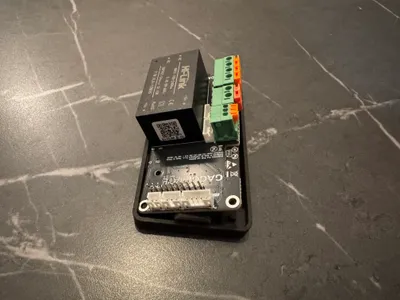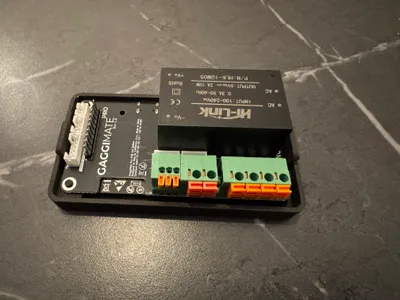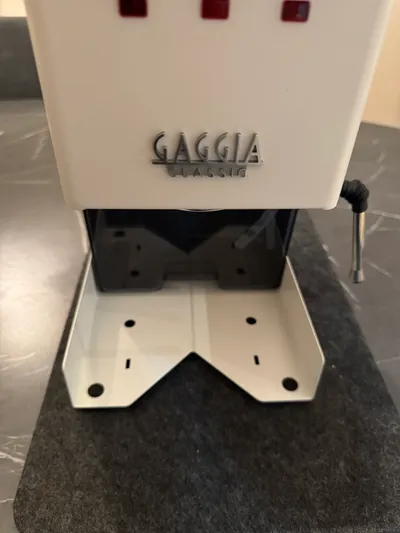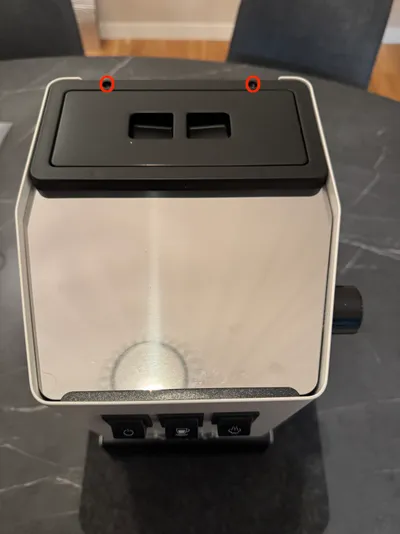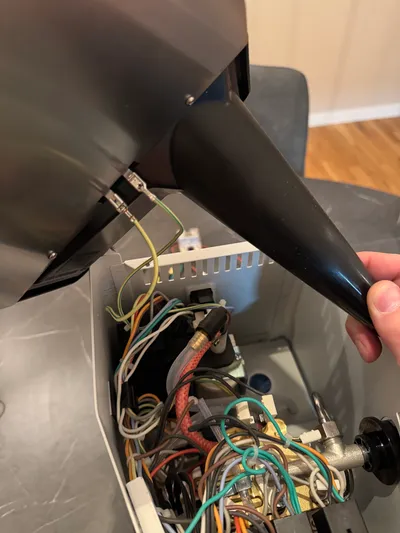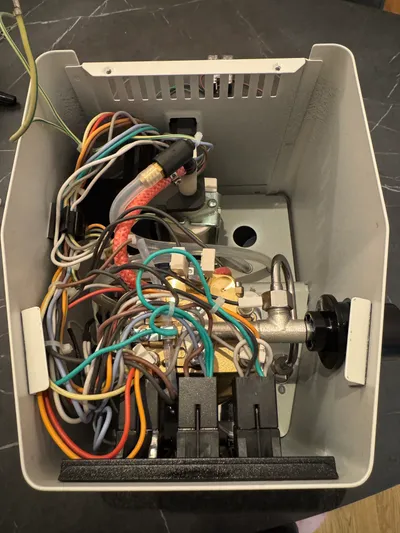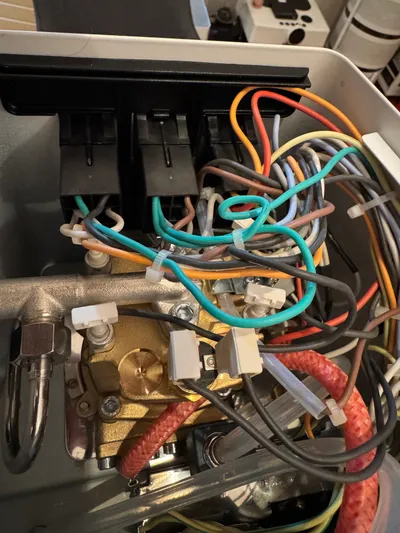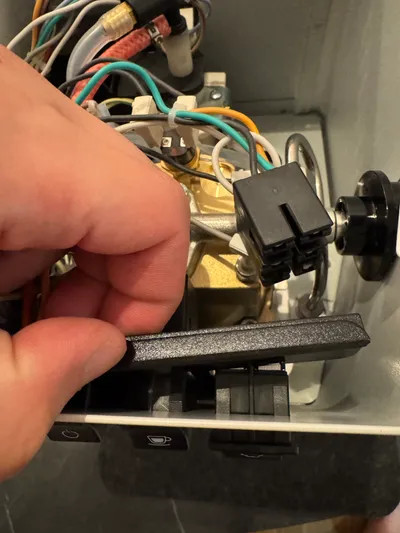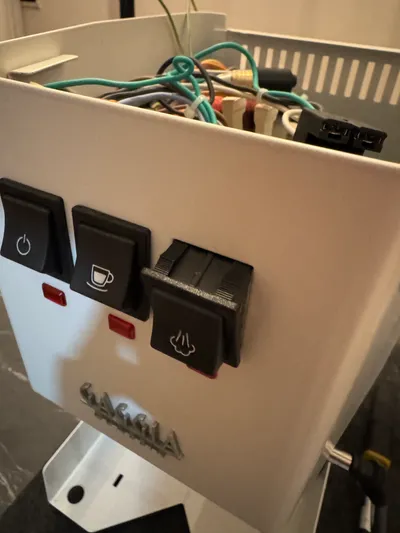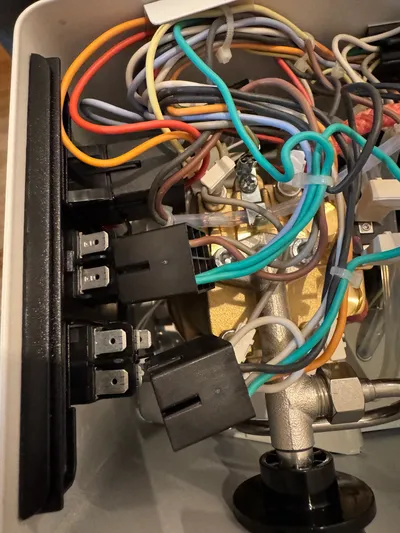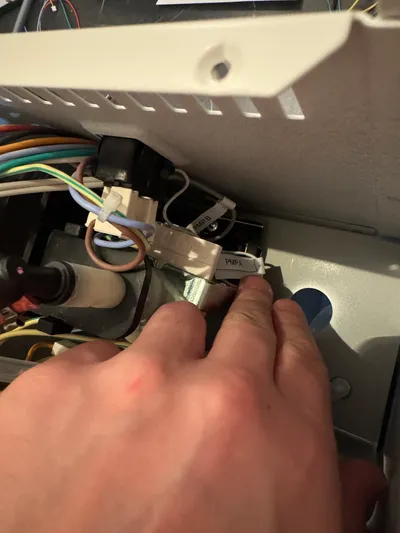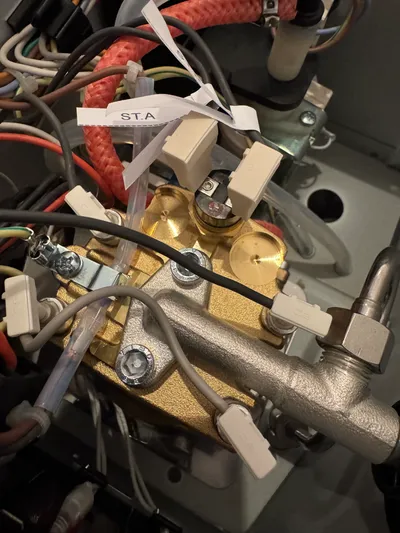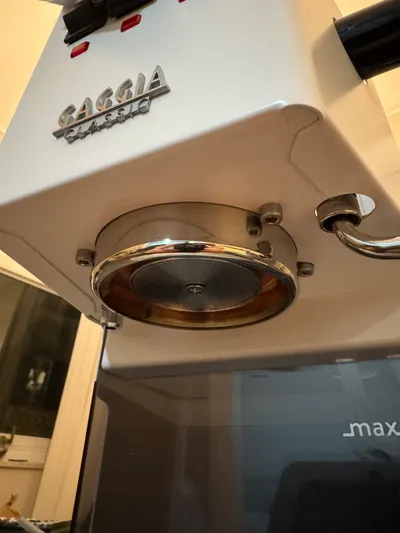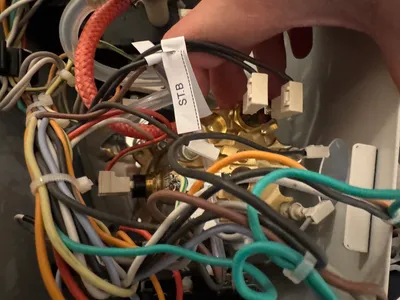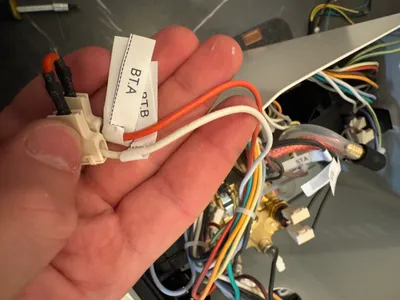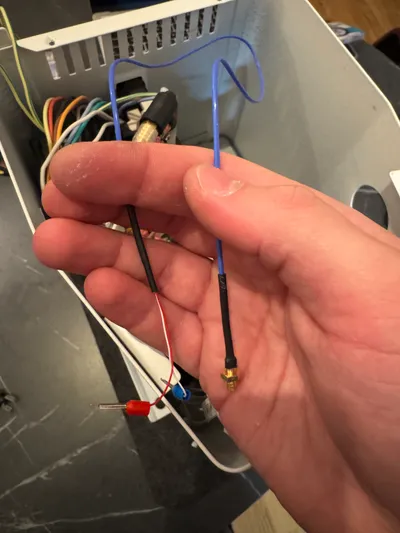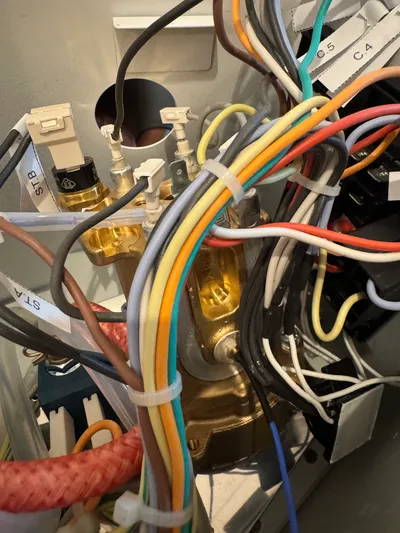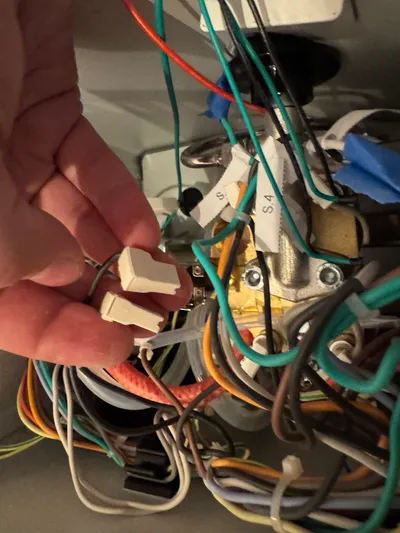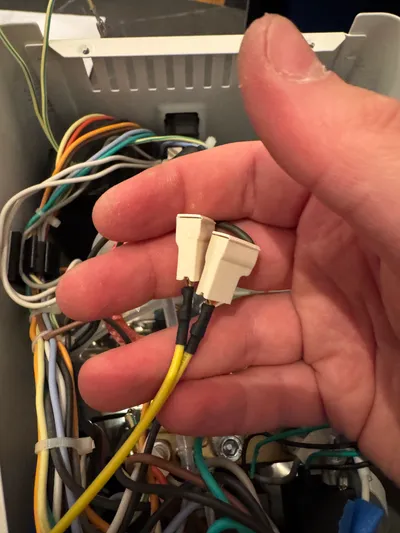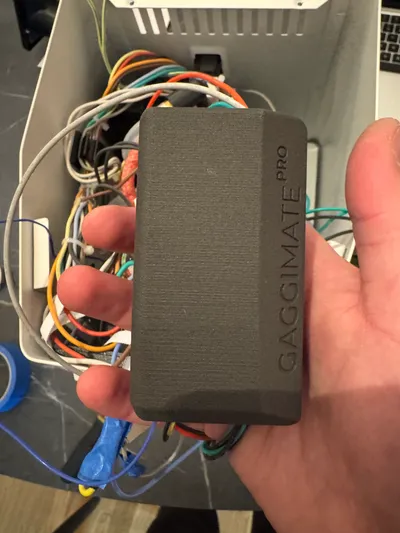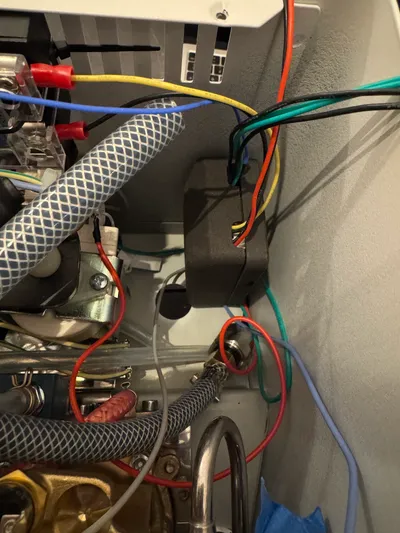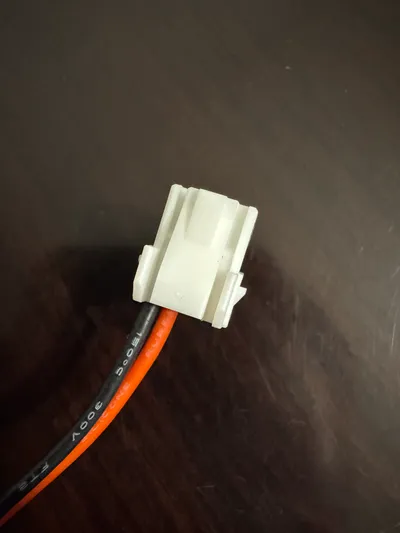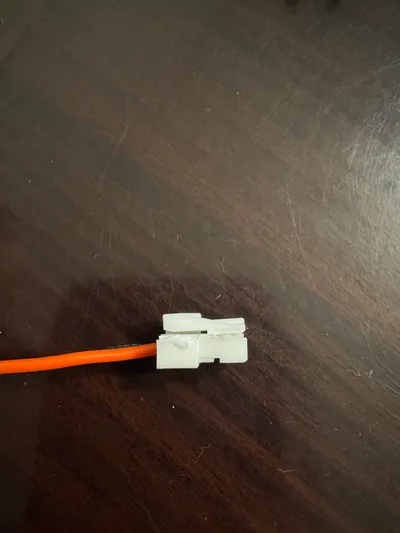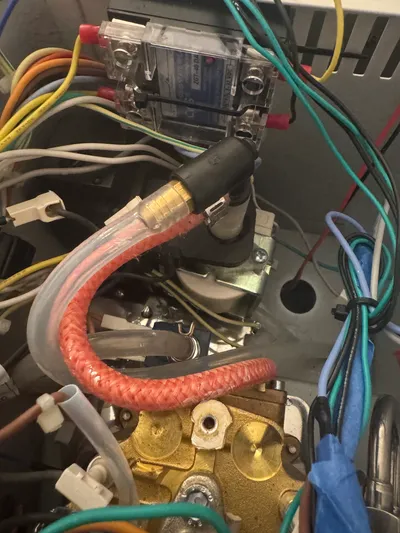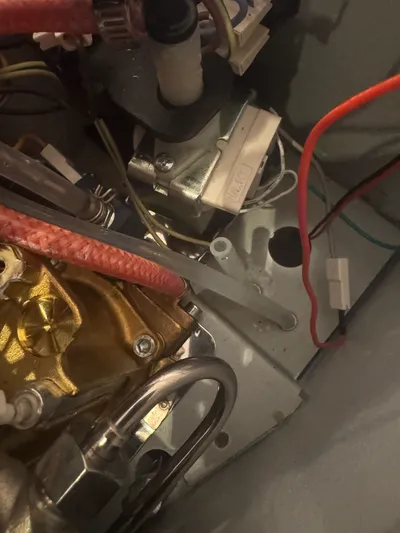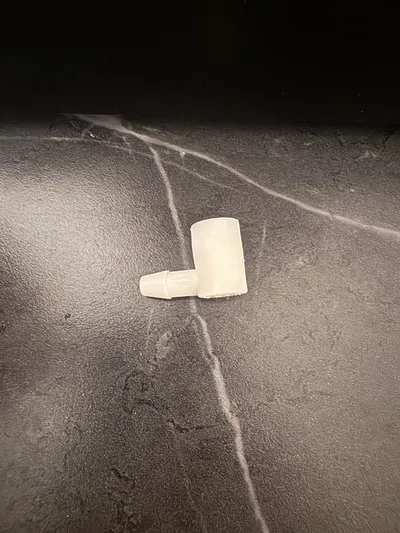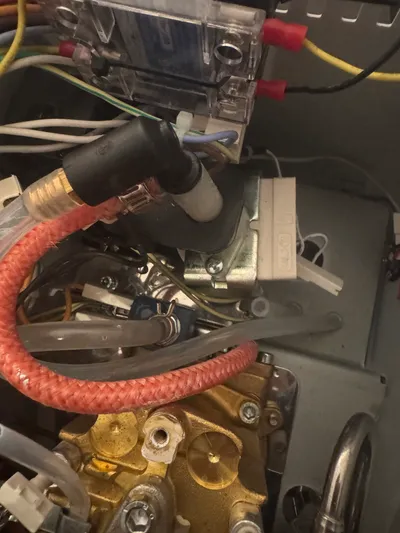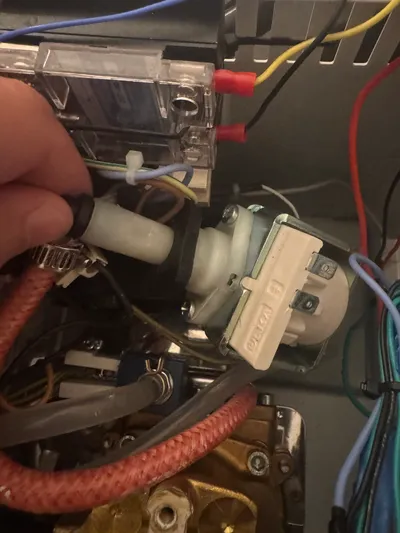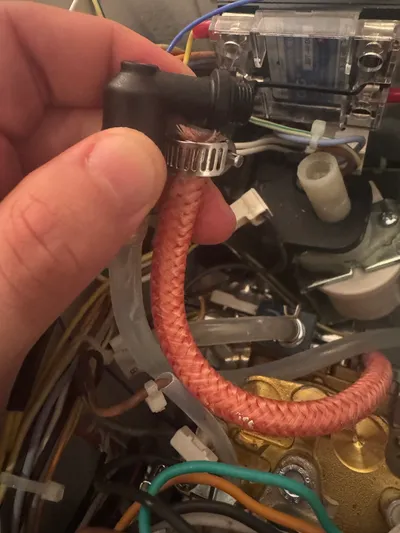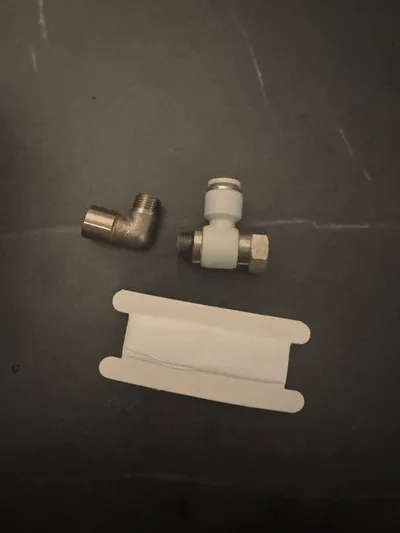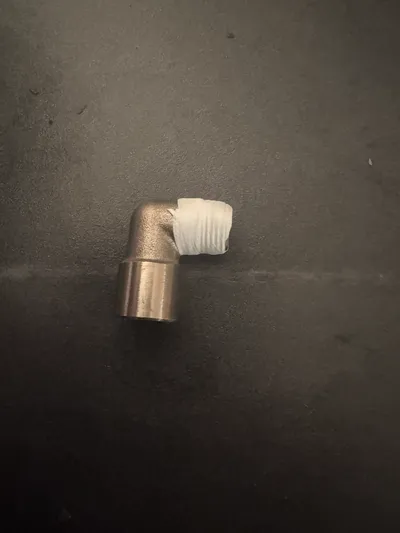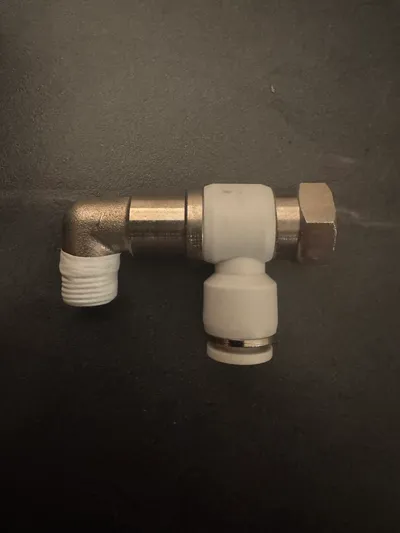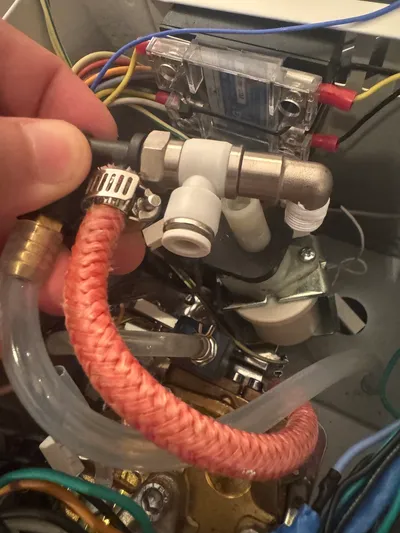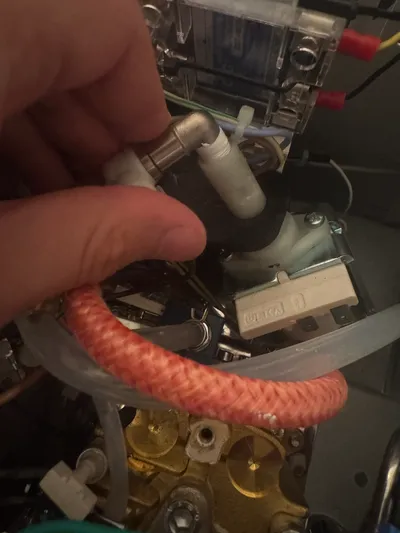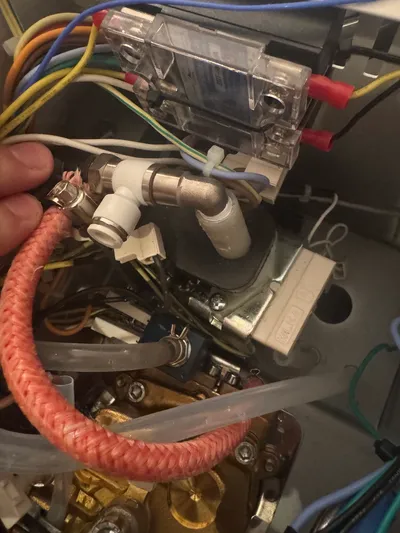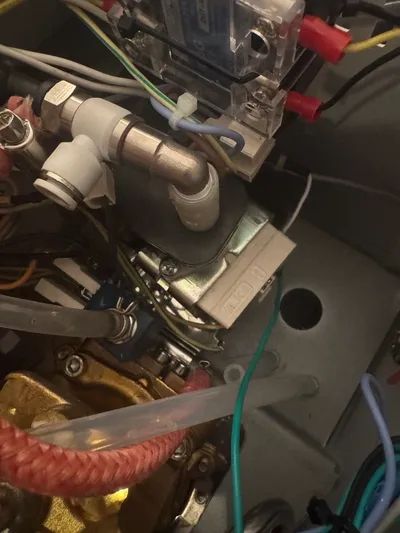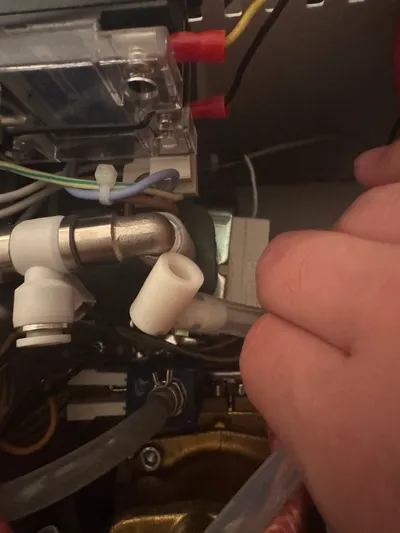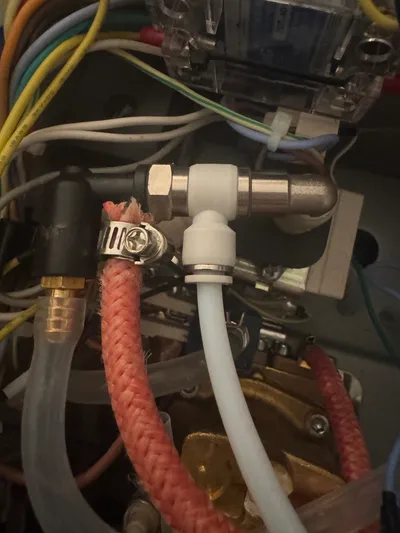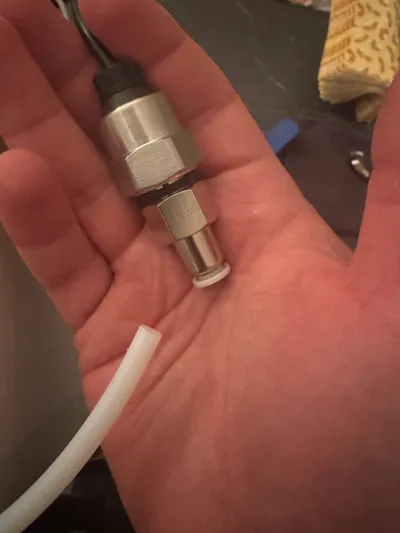Installation
Gaggia Classic Pro/Evo (2019 - now)
Installation procedure for Gaggia Classic Pro/Evo/etc machines
Important Notes
High Voltage Safety: Exercise extreme caution when working with high voltage. If you are unsure about any steps, consult a professional technician.
Follow Local Codes: Ensure that your work adheres to local electrical codes and standards.
Documentation: Keep a record of your wiring setup for future reference and troubleshooting.
Contents
- 1. Preparation
- 2. Machine preparation
- 3. Heater modifications
- 4. HV Wiring
- 5. LV Wiring
- 6. Plumbing / Pressure installation
- 7. Final checks
1. Preparation
Safety First! Unplug your machine to ensure there’s no live connections while working on it. Work in a dry environment to prevent electrical hazards.
Start by gathering all the materials and tools listed in the sourcing pages. Follow these guides if you haven’t already: Printed Parts and Flashing.
Read through the entire guide first to make sure any questions will be cleared before the installation. You can always contact us for help or open a help thread on our Discord.
Check the Pinout and prepare the wires if you didn’t buy the kit.
Check all the parts
Check that you have all the parts ready to go. You can see what parts and tools you might need in the pictures below.
Depending on the kit generation the plumbing parts (fittings and hose in the left two pictures) will be replaced by the ones in the right two pictures. We have split up chapter 6 in 2 parts for either the new or the old kind of plumbing. You will only have to do one of the two.
Prepare the wire labels
We’ve prepared a printable guide to label your wires in order to easier follow the install and fix mistakes. You can also just use tape, sticky labels or whatever else you have.
Download the wire labelsWiring Diagrams
You can check the wiring diagram for additional information.
Check the screen
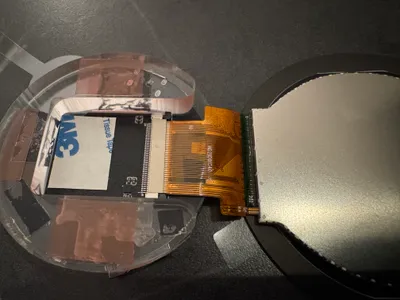
Before you assemble the screen, check that the ribbon is seated and locked correctly like in this picture. If it isn’t for any reason, unlock the connector by pulling down the black locking tab horizontally to the board, insert the cable and close it back up. Check for an image by plugging it into a USB connection before you continue.
Assemble the printed parts
Take the screen out of the box and try to glue it as straight and centered as possible. Place it in the base and close gently with the cover. Be careful as the screen may fall apart easily if force is applied. There is no need to remove the plastic piece between in-between the screen and the board.
Place the PCB in the pcb cover at an angle to guide the USB-C port in the cutout. Afterwards push it down to lock it in the base. Make sure you’ve already flashed it before as you might need to access the boot button to do so.
2. Machine preparation
Disassemble the machine
Remove all parts from the machine that could bother you during the installation or fall out like the water lid, drip tray and portafilter. Undo the two screws marked above in the picture.
Afterwards, remove the cupwarmer and disconnect the two grounding wires. Remember to connect these again during re-assembly!
You see an overview of what you should expect above. Make yourself familiar with the layout of the machine. You can use above pictures for reference if you need to check anything. The machine in the pictures is a Gaggia Classic Pro E24 with the Eco PCB. This machine uses monoblock connectors, the wiring is identical to other models though.
Labeling
To make labeling a bit easier, especially with the monoblock style connectors you can tilt out the front switches a bit to free those. If you do not have monoblock connectors tilting the switches might still help with labeling.
Now use the labels that you printed or tape to label all the connections, we will refer to those by their number/name in the following steps. The brew thermostat (BT) sits on the left side of your boiler, the steam thermostat (ST) is the one screwed into the top of the boiler.
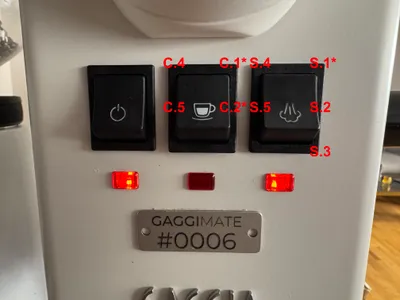
The picture above will show you where these labels should be placed for the button cables. The connections marked with an asterisk are only present on a 240 V machine.
3. Heater modifications
Brew thermostat
In order to make uninstallation of the brew thermostat as well of installation of the thermocouple easier, it’s required to loosen the steam valve assembly and unscrew the group head from the case so you’re able to tilt the boiler assembly. You remove the steam knob and steam wand to gain even more space. After you’re done with the install, re-assemble them before testing the machine.
By tilting the boiler you can easily access the brew thermostat, unscrew it and bridge the connections BT.A and BT.B with the small red jumper.
Now that the brew thermostat is removed from the boiler you can screw in the M4 thermocouple into the boiler. Be careful to rotate the wire (folding the wire cautiously helps) as you screw it in and only fasten it hand tight. The thermocouple can easily break off during the screwing process if not handled with care. It is advised to connect the thermocouple at the end of the installation to the PCB. The red cable is the + connection and the blue is -. See the Pinout for where these are located.
Steam thermostat
Remove the connections labeled ST.A and ST.B from the steam thermostat and extend them with the two yellow AWG18 wires. You can choose to either remove the steam thermostat or leave it in place.
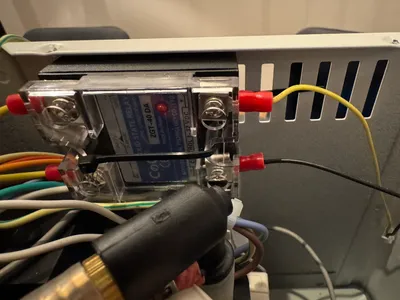
Mount the SSR now or at the end of the installation on the back slots of the machine with either M4 screws and bolts or zip ties. Connect the two yellow cables to Output side of the SSR (polarity does not matter) as well as the Yellow/Black Signal cable to the Input side. (Yellow = +, Black = -) Be careful not to mix up the yellow output and cables.
4. HV Wiring
Steam Switch
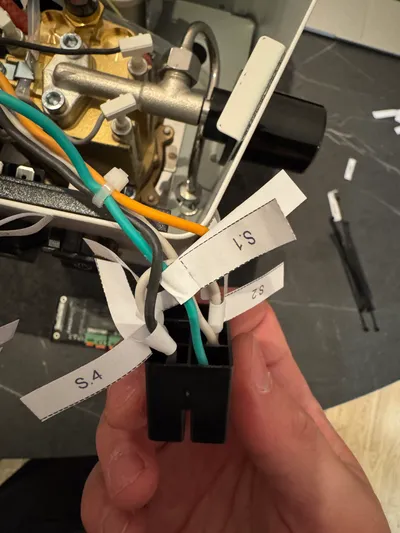
The picture above shows how the steam switch is wired by default. On a machine without the Eco PCB, the green wire labeled S.1 would be missing. On a US machine the double white will be on the other side. Follow the labeling and modifications of the switch positions regardless of that.
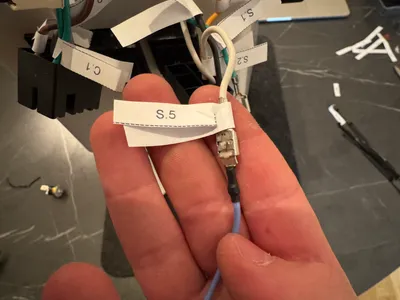
Remove the S.5 (white) from the left side of the steam switch (or the monoblock connector, you can push the connectors out with a screwdriver) and use the blue cable from the wiring kit to extend is to the N/Neutral connector of the PCB.
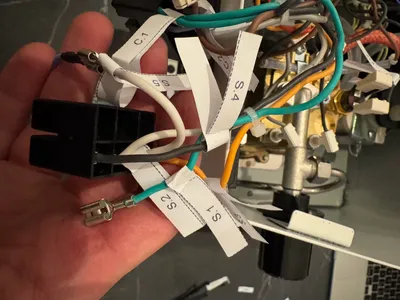
Remove S.1 from the switch if it is present and move S.4 (black) to that position. Afterwards the wiring of the switch should look like in the above picture. Use tape to make sure the connections or removed connectors are properly insulated.
Brew switch
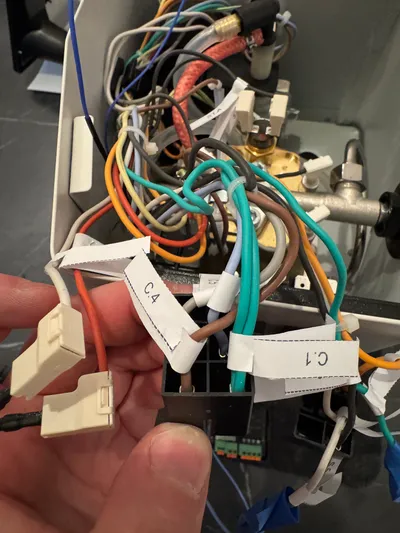
The picture above shows how the brew switch is wired by default. On a machine without the Eco PCB, the wires labeled C.1 and C.2 would be missing.
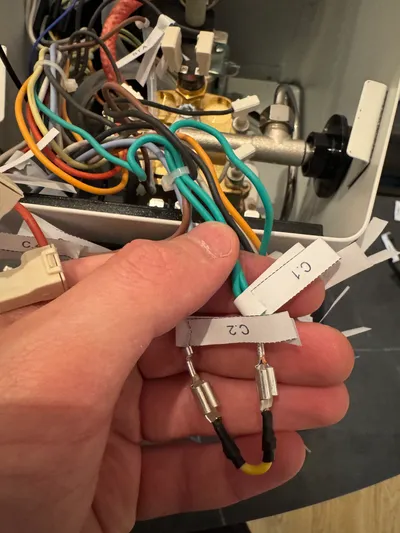
If you do have the Eco PCB, you deactivate it in this step by bridging the wires C.1 and C.2 with the short yellow jumper from the wiring kit.
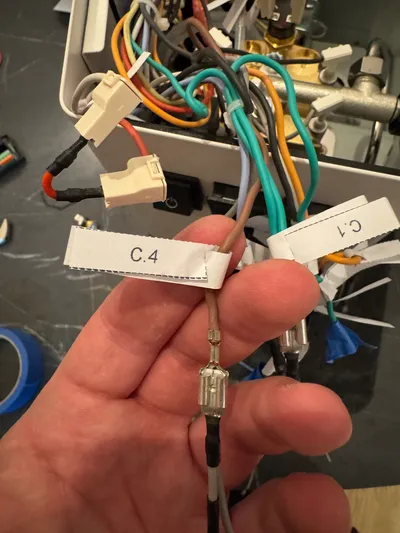
Now remove C.4 (brown) from the brew switch and extend it with the grey cable from the wiring kit to the L/Line connector of the PCB. If your grey cable has two ends for the monoblock connector, simply use tape to insulate the spare end. (This is required for another machine installation)
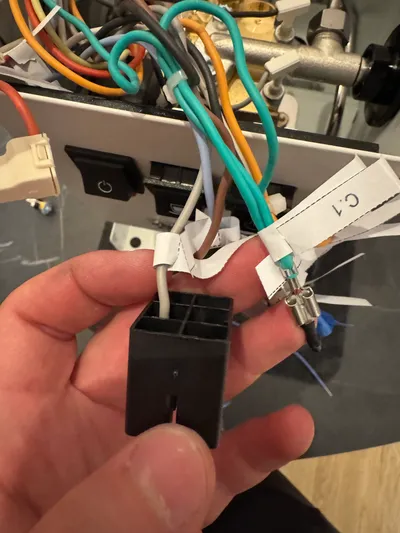
When you’re done, the brew switch (or monoblock connector) should look like this. Again, make sure to insulate any connections.
Pump/Three way valve
If you’re installing the pro kit you can do these steps together with # 6.1 where you remove the pump. It makes accessing the wires easier.
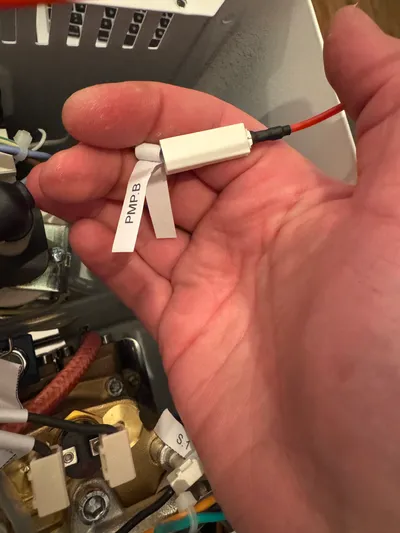
Remove the connector PMP.B (grey cable, the one that doesn’t go into the thermal fuse on the pump) from the pump and extend it with the red wire from the wiring kit to the V/Valve connector of the PCB.
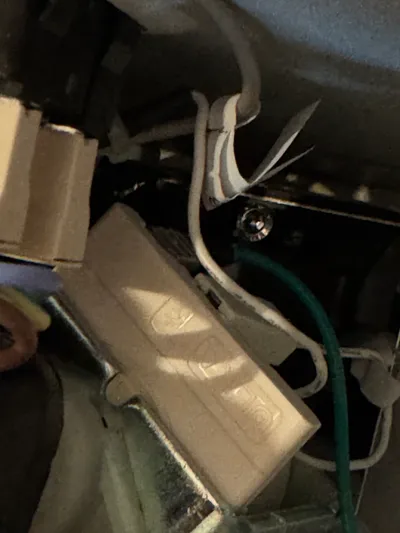
Now connect the green wire from the wiring kit to the pump where PMP.B was previously connected and run it to the P/Pump connector of the PCB.
5. LV Wiring
Button functionality
You can choose to retain the functionality of the buttons by using the green/black 4-wire cable from the wiring kit. Connect a green and black wire (check the pinout for steam/brew) to the free sides of both switches (Positions C.1, C.2, S.4, S.5). If you have the monoblock, you should put those back first and then push the connectors in there. Make sure never to mix up high and low voltage on the same side of the switch.
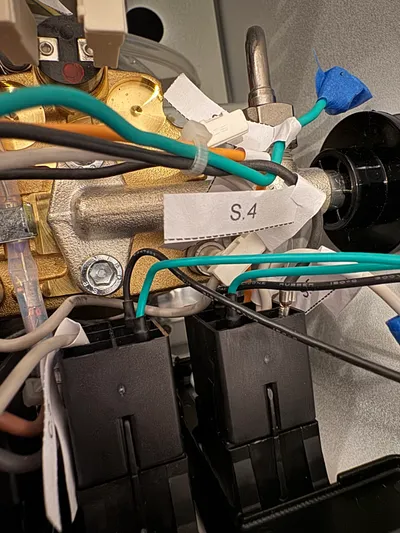
PCB
Connect the JST PH connectors (small white plugs) to the PCB and you can either place it in the corner of the casing now for Standard or do this after you install the pressure parts for GaggiMate Pro.
If the PCB casing doesn’t fit in the displayed position you can also fit it just behind the steam wand.
Screen
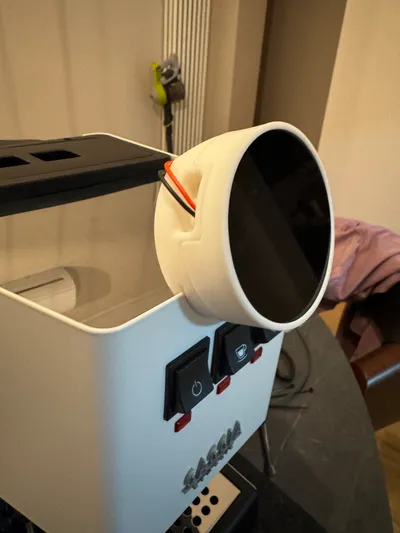
Run the red/black cable from the PCB to the screen and connect it to the 4 pin connector. The cable has enough space to be routed between the cup warmer and casing. The screen casing simply sits on the edge of the housing. Some machines have a slightly thicker paint so if you have trouble getting the casing on, you can use a nail file or sand paper in the groove.
Some generations of the kit came with a slightly mismatched connector. This can be fixed by cutting off one of the side rails of the plug as shown in the pictures below. Make sure not to force the connector too much into the screen as you may damage it.
6. Plumbing / Pressure installation
Follow this part only if you’re installing GaggiMate Pro. As mentioned at the start of the guide please only follow either 6.1 or 6.2 depending on which generation of the kit you received.
6.1 New Plumbing (Installation at pump)
Pump removal
Free up a bit of space around the pump so you can remove the connectors from it. Also remove the hose connecting it to the tank and the little spout on the bottom of the pump. The spout prevents it from being lifted out of the mount.
Once these connections are removed you can simply lift it out of the lower rubber bracket. (It is simply pushed on) You can now hold the pump at an angle and remove the thermal fuse from the pump if you have one. This is the little disk shaped component next to the two pump connectors. In some machines this will be fixed with hot glue which can be peeled off.
Now that the pump is free to rotate simply unscrew it from the black OPV part as shown in the picture.
Prepare the new fittings
Gather the shown parts from the plumbing kit. Wrap 4-5 layers of PTFE tape around the male part of the L-shaped fitting. You want to do this clock-wise so it doesn’t undo itself when screwing on the pump later. If you still encounter leaks after installation, add additional layers of PTFE tape. Make sure to get none of the tape inside the water paths as it can block the 3WV and require you to clean it.
Once you’re done with that, connect the two parts as shown above. The T-fitting comes with a gasket so no PTFE tape is needed on that connection.
Reassembly
Screw the combined piece onto the OPV as shown in the first picture above. It should sit at a similar angle as shown to make routing the tubes easier.
Then just screw the pump onto the new fitting by rotating it as you did before. When you feel the connection is tight and the pump sits in a way where you can reach the connectors, push it back into the lower rubber mount.
If you have a thermal fuse, insert that back into the holder on the pump then plug back in the wires that you previously removed. Put the tube back onto the spout and plug the spout back onto the pump.
Connecting the transducer
Push in the PTFE tube into the T-fitting. Screw the push fitting onto the pressure transducer. This only need to be hand tight. Measure out a length of tube so that the transducer can lie horizontally on the bottom of the machine and cut it with the provided PTFE-cutter. The tube needs to be filled with water, you can either do that manually in this state or bleed it by unscrewing the transducer fitting slightly and using the pump when the machine is on. Make sure to put a towel around it so water doesn’t spray everywhere.
Plug the PTFE tube into the transducer fitting and place it at the bottom of the machine.
6.2 Legacy Plumbing (Installation in hose)
Transducer assembly
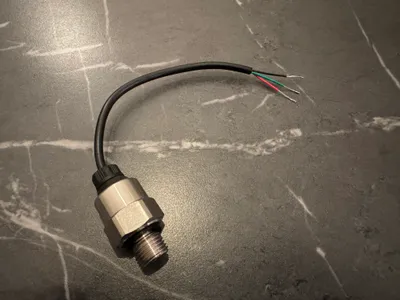
Prepare the cable of the transducer by cutting off a bit of the black insulation and stripping the wires to 11mm.
Gather all the plumbing parts from the kit and start by placing the little gasket inside of the barbs connector. Screw the transducer into the barbs connector. You want it tight enough so it doesn’t leak but not so tight that the gasket is pushed out and blocks the transducer.
Cut 15-20cm of the tube and connect it to the transducer, secure it with hose clamps. Fill this tube with water and connect the other side to the T-fitting. You can choose to either cut the original hose of the machine in the middle and add your T-fitting there or add a short piece on one end of the T-fitting so you don’t need to modify the original hose.
Place the T-fitting inline with the pump (In this example i’ve opted to simply extend the original tube for a non-destructive installation. You can loosen the Oetiker clamps with a flathead screwdriver). Make sure everything is tightened securely and place the transducer at the bottom of the casing.
7. Final checks
Review all your labeled connections for accuracy and completeness. Ensure that there are no exposed wires and that all connections are secure and insulated.
Once you have completed that step, test your wiring for possible shorts with a multimeter and make sure you haven’t connected any LV connections with HV connections. Also test the switches operation for continuity in the different switch positions.
Testing
Now is the big moment. Turn on your machine for the first time. The heater should not be heating on power-on and nothing else should be running. You can check if the heater is doing anything by observing the LED on the SSR. The screen should turn on and show the Standby screen of GaggiMate. Touch the screen once to switch to warmup mode, you should see the current room temperature being displayed and the LED on the SSR will light up indicating it’s heating up.
Pressure test
Before you close up the machine you’ll want to run a pressure test of the system to catch any leaks. For this you can simply run the water mode for a while and see if anything needs fixing.
Final Steps
Reassemble the Machine: Carefully put the panels back on, ensuring that there are no pinched wires.
Important: Conduct a Safety Check: Perform a final inspection to ensure everything is insulated and that there are no exposed wiring connections.
If you have any further questions or need additional clarifications, feel free to go into the Discord and make a help thread or post on our Subreddit.
Congratulations
You have now finished setting up your Gaggia Classic Pro with GaggiMate and can start making coffee. To check more tasks on your first startup go to First Start. When you do the first test shots and check the system, remember that you’ll need to have a puck or blind filter in the machine to build any pressure. If you encounter any problems during the installation check our Troubleshooting guide or open a help thread in #gaggimate-help on Discord.
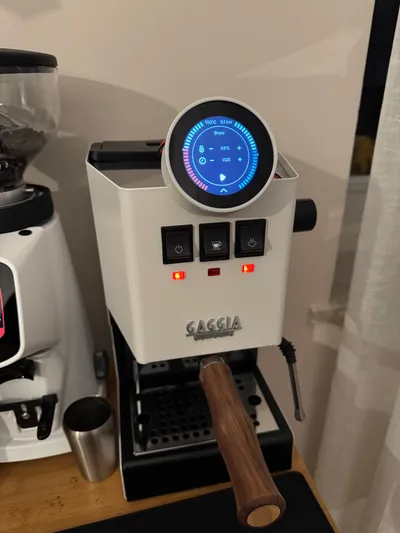
Have questions?
Still have questions? Join the Discord!
